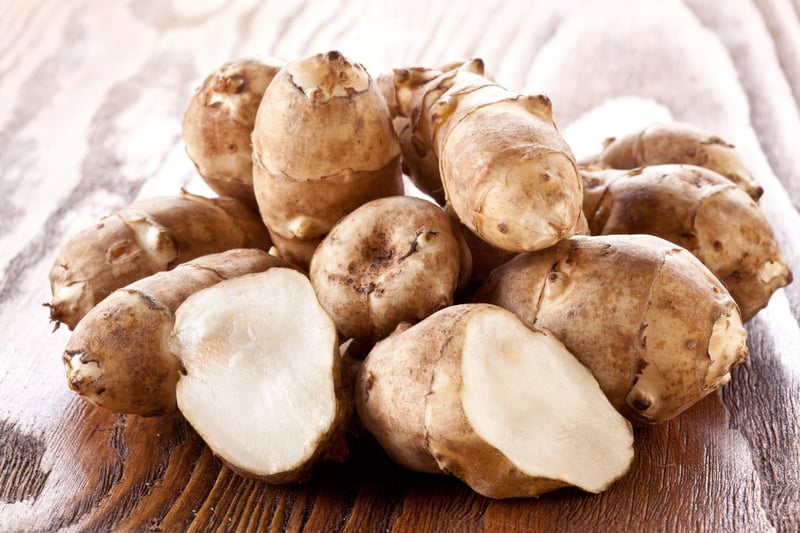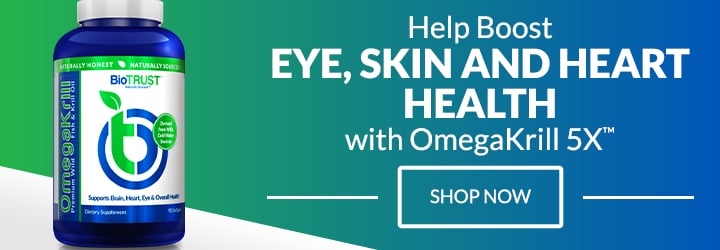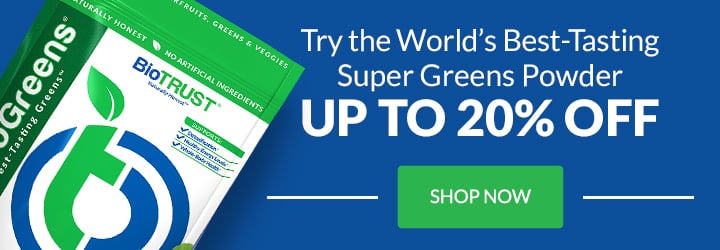18 Best Prebiotic Foods You Need in Your Diet

You probably already know how important gut health is to digestion, metabolism, immune system, skin health, mental health, and more. The gut is home to trillions of helpful bacteria needed for healthy digestion, absorption of nutrients, and to help fight off diseases. But you may be wondering what the best prebiotic foods are and how you can get them into your diet.
Wait, did we say prebiotic, not probiotic? Indeed, we did. Like probiotics, prebiotics are vital for a healthy gut. But they aren’t the same.
Probiotics are the healthy bacteria that live in the gut. And, there are also foods that provide probiotics, like kefir, sauerkraut, and yogurt, as well as supplements.
Prebiotics are foods we consume that help feed good bacteria that reside in the gut. It can be hard to figure out how many prebiotics are in a given food. But one key way to tell a food is high in prebiotics is to look at the fiber content. Foods that are high in fiber tend to also provide plenty of prebiotics, though not always.
These prebiotics aren’t digested by the body but rather find their way into the large intestine, where they can feed the hungry gut bacteria. The microbiome then uses these prebiotics to create nutrients the body needs to help improve calcium absorption for bone health, reduce allergies, moderate inflammation in the gut, and promote a healthy immune system. Some even create nutrients like the short-chain fatty acids butyrate, acetate, and propionate, which then aid metabolic health. 1, 2
Some of the most common and most beneficial prebiotics include polyphenols, inulin, pectin, resistant starches, fructooligosaccharids, galactooligosaccharides, and beta-glucans. These prebiotics are found in a variety of foods, including the vegetables, fruits, seeds, and whole grains listed below.
18 Best Prebiotic Foods
1. Apples
One medium-sized apple provides ~5 grams of fiber, mainly a type of soluble fiber known as pectin. Pectin makes its way through the digestive system and into the large intestine where it can provide healthy fuel for the microbiome. This may be one of the reasons apples are recommended for normalizing cholesterol levels and supporting heart health. 3 Just remember to leave the skin on as that’s where most of the nutrients reside.
2. Asparagus
Asparagus is popular with the fitness crowd as it’s delicious, low in calories, and high in the prebiotic fiber inulin. It can be chopped up and added to salads and stir-fries, roasted, baked, or grilled, and fits in well with a variety of dishes and meal plans. 4
3. Bananas
A banana provides around two grams of fiber, including the soluble prebiotic fiber FOS or fructooligosaccharides, which have been shown to improve mineral absorption, decrease levels of blood lipids, and help keep folks regular. 5 Greener bananas provide the highest amount of prebiotics like resistant starch. 6 As they get more ripe, the fiber tends to break down and is converted into sugar.
4. Barley
Barley isn’t just for beer. It’s also a whole grain that can be used in a variety of recipes that provides the prebiotic fiber beta-glucan. This fiber has been shown to help lower cholesterol and reduce the risk of heart disease as well as potentially helping lower blood sugar levels. It may also help reduce appetite, improve metabolism, and promote insulin sensitivity. 7, 8
5. Chia Seeds
There are so many reasons to include chia seeds in the diet. Of course, they’re high in fibers like soluble and mucilage, which have prebiotic benefits. They may also help lower LDL cholesterol levels, help balance blood sugar levels, and they’re high in antioxidants and healthy omega-3 fats.
6. Cocoa
Chocolate is not only one of our favorite foods but one the good bacteria loves too due to the rich concentration of flavonoids.9, 10 Just remember that sugar feeds the bad bacteria, so look for either cocoa powder, cocoa nibs, or dark chocolate that’s at least 70% cocoa.
7. Dandelion Greens
While many people overlook dandelions or work vigorously to remove them from their yards, the greens are a highly nutritious food that’s rich in inulin.11 They do, however, have a strong flavor. Instead of just tossing them into a salad (though you can do that too), sauté them with a little garlic and olive oil or consume them with other less potent greens. 12
8. Endive (aka Chicory)
Often considered an under-used vegetable, endive is a rich source of inulin that may help aid in digestion, provides antioxidants, and may help ease constipation. It can be roasted or added to simple salads. The roots (i.e., chicory root) have long been used as a coffee alternative, and the fiber found in these roots is ~68% inulin, which is important for digestion and bowel function as well as healthy fat metabolism.13 Remember, a little chicory root goes a long way. If you haven’t consumed chicory before, start with a smaller serving as too much inulin too fast may lead to tummy issues like gas, bloating, cramping, and diarrhea.
9. Flaxseeds
Another incredibly nutrient-dense source of prebiotics is flaxseeds. When consumed regularly, they help promote regularity and may even decrease the amount of fat you absorb. What’s more, flaxseeds help you better manage blood sugar levels.14, 15 To get the most benefit out of flaxseeds, grind them first before eating.
10. Garlic
Small yet mighty, garlic is not only a quality source of prebiotics, but it may also help prevent the growth of harmful bacteria in the gut. It’s also nutrient-dense and provides 2.1 grams of fiber per serving. Plus, it helps support healthy inflammation, blood pressure, and cholesterol.16 It should be noted that raw garlic has more prebiotic fibers than cooked garlic, in which much of the fiber is converted into sugars.
11. Jerusalem Artichoke
Another gut-friendly food, Jerusalem artichokes are rich in fiber, low in carbs, low in sugar, and good for the gut as they’re rich in inulin fiber. In fact, Jerusalem artichokes are one of the foods highest in inulin. Research suggests adding these tubers to your diet may help support your immune system and protect against metabolic disorders.17
12. Oats
A two-fer option for healthy prebiotics is the common oat. Whole oats (both old-fashioned rolled and steel-cut) provide both beta-glucan and resistance starch, which have a positive effect on the microflora. 18, 19 The beta-glucan found in oats has been associated with not only improved gut health but better blood sugar control and even a decreased risk of cancer. Plus, it helps slow digestion and, therefore, helps control appetite. 20 – 23
13. Onions
Another powerhouse food when it comes to flavor, nutrition, and prebiotic benefits is the humble onion. Onions provide FOS as well as inulin in the form of the soluble fiber oligofructose. Research suggests that this inulin can help clean out the intestines, increase the population of good microbes, and even help people eat less due to its positive effects on suppressing appetite. What’s more, eating onions (along with other allium vegetables like leeks, shallots, and spring onions) has even been associated with a decreased risk of gastric cancers. 24 For the biggest benefit, cook onions until just tender rather than overly soft to maintain their natural fiber instead of breaking down into sugars.
14. Plantains
If you want a food high in resistant starch, look no further than plantains. They provide even more than green bananas, which makes this a potent prebiotic food. Plantains are often prepared by frying. However, you can cut the calories and boost the benefits by either baking or using an air fryer instead.
15. Potatoes
Especially when cooked and then cooled, potatoes are an excellent source of resistant starch. Whether you prefer German, mustard, or traditional, potato salad checks a lot of boxes for a healthy, fiber-rich salad.
16. Pulses
Beans and lentils from split peas to chickpeas to kidney beans are also good sources of resistant starches to feed the good bacteria in the large intestine. There, they’re fermented into butyrate, which helps support insulin sensitivity and moderate inflammation.
17. Shitake Mushrooms
These fungi are particularly high in beta-glucans and have been found to help support healing and balanced immunity. Toss them in your next stir fry, soup, or chili for a healthy digestive boost. Not a fan of shitake? Other types of mushrooms (button, portabella, chanterelle, cremini, oyster, etc.) also offer prebiotic fibers.
18. Spinach
Yet another healthy dark, leafy green that provides many benefits is spinach. Not only can the prebiotic (specifically sulfoquinovose or SQ) help feed good bacteria, it can provide a protective layer in the gut against the growth of harmful bacteria.
Best Prebiotic Foods: A Wrap-Up
To ensure you are getting plenty of the best prebiotic foods, eat a wide variety of foods like those listed above. Enjoy high-fiber grains, vegetables, and fruits. Add beans and other legumes to soups and salads, and include seeds and nuts as snacks or toppings. You’ll give your microbiome the fuel it needs to stay healthy and, in turn, help you stay healthy.








